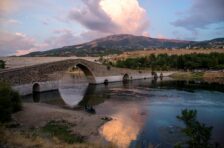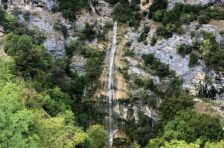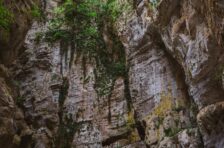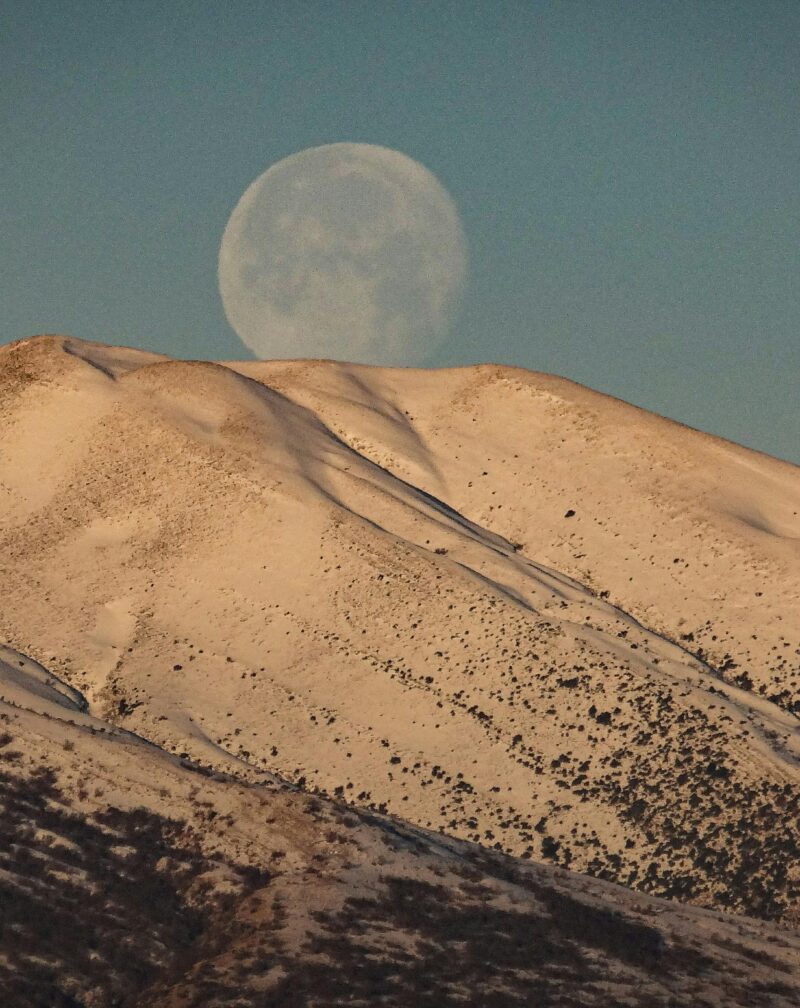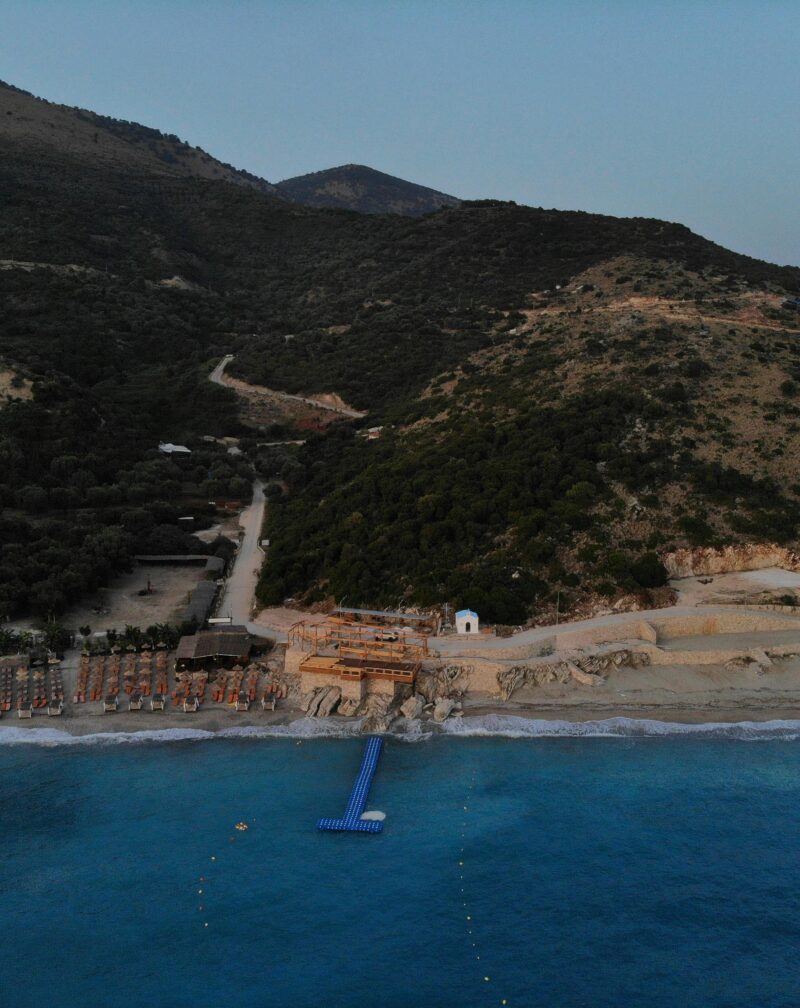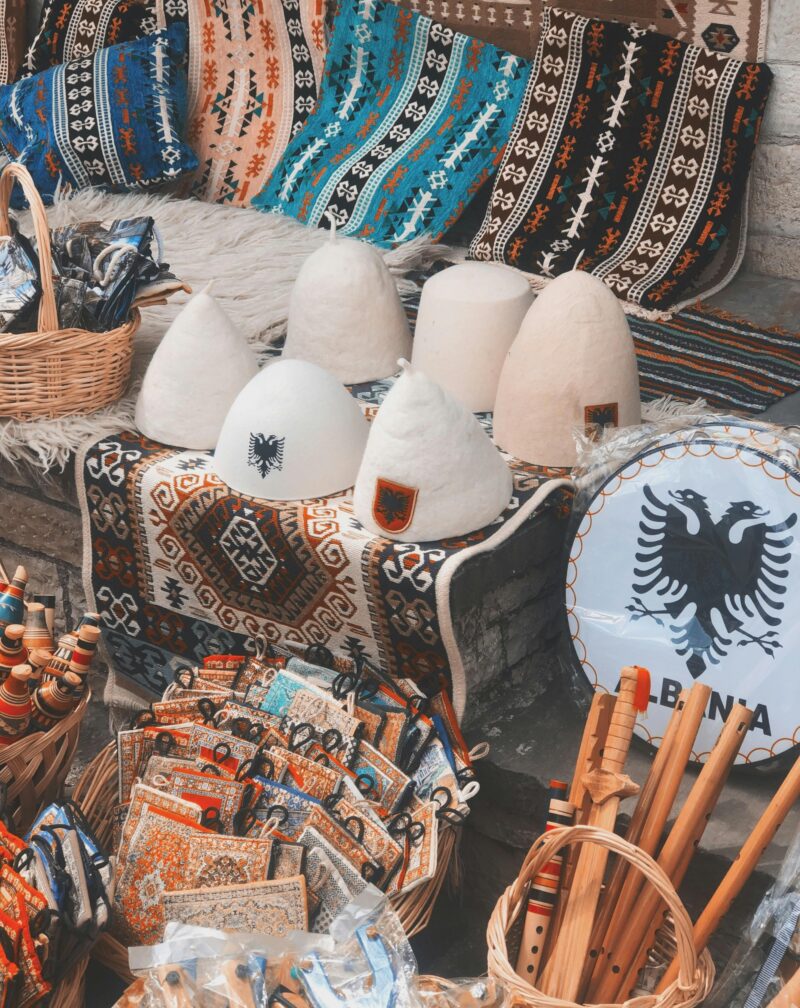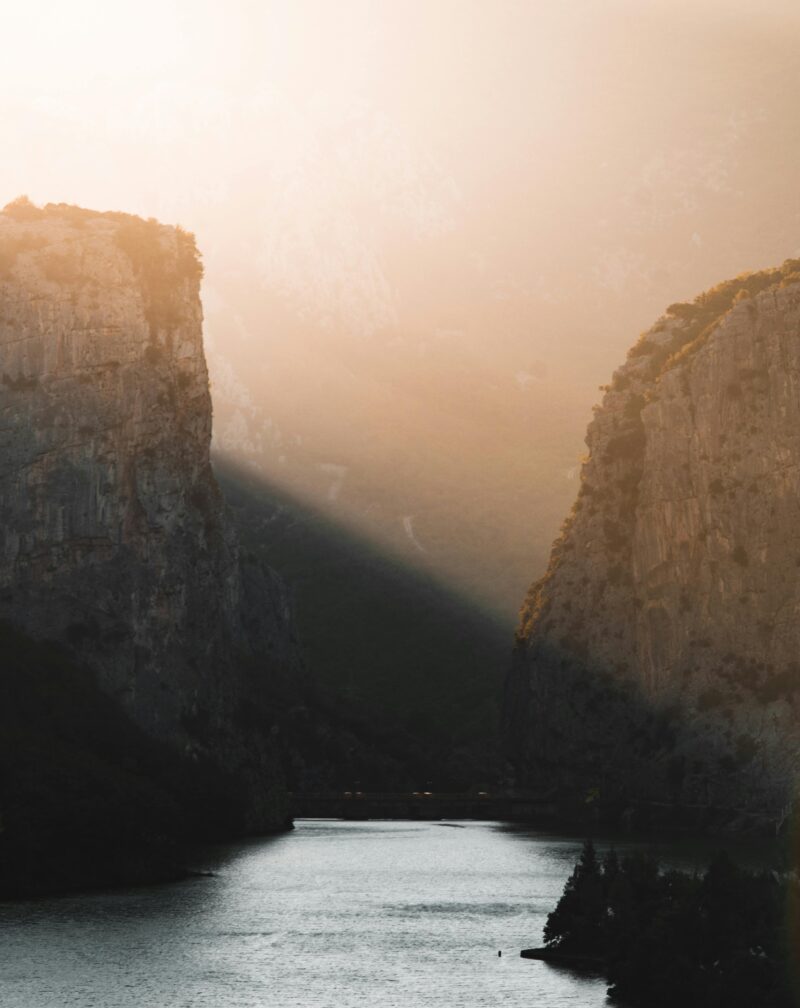Beyond the Tourist Trail
Albania’s main attractions—Berat, Gjirokastër, Saranda, the Riviera—deserve their popularity. But smaller, less-visited places offer equally rewarding experiences without crowds. Some require effort to reach, others just don’t appear in most guidebooks yet.
Voskopojë
This mountain town near Korçë tells a remarkable story. In the 18th century, Voskopojë was one of the Balkans’ largest cities, perhaps 35,000 people, a major commercial and cultural center. Orthodox churches filled with frescoes, printing presses, and an academy made it significant beyond its size.
Then raids and fires destroyed it repeatedly between 1769 and 1789. The population fled. The city declined to a small village of a few hundred people.
Today, you can visit remaining churches with stunning frescoes—St. Nicholas, St. Athanasius, and others. The setting is beautiful, surrounded by mountains. The sense of lost grandeur is tangible.
Few tourists make it here. You’ll likely have churches to yourself. The road from Korçë is decent but winding. A guide helps with church access and historical context.
Go in spring or autumn when the surrounding hillsides are beautiful. Winter brings snow, making access difficult. Summer works but gets hot.
Theth
Theth is somewhat known among hikers and adventure travelers, but many cultural tourists miss it. This mountain village in the Albanian Alps represents traditional northern Albanian life.
Stone houses with thick walls. Tower houses (kulla) built for defense during blood feud periods. Traditional lifestyles maintained because isolation preserved them.
The Blue Eye of Theth—a stunning spring—is worth the hike. Grunas Waterfall is spectacular. The surroundings offer serious hiking for those equipped and experienced.
Getting there requires commitment. The road is rough, sometimes requiring 4WD. It takes hours from Shkodër. But that remoteness is part of the appeal.
Stay in village guesthouses run by families. They’ll feed you traditional food, tell stories (through translation if needed), and give you a sense of highland life.
Best visited June through September when the road is reliably passable. Snow closes access in winter.
Lin Village
Tiny village on Lake Ohrid’s Albanian shore. Ancient basilica ruins with incredible mosaics, far less visited than similar sites despite being equally impressive.
The setting is peaceful—small village, lake views, minimal development. You can explore ruins quietly, walk along the lake, eat at simple restaurants.
The road from Pogradec takes about 20 minutes. Almost no tourists compared to the North Macedonian side of Lake Ohrid.
Go for the mosaics if you’re interested in early Christian art. Stay for the lake views and relaxed atmosphere.
Permet
Mentioned in tour descriptions, but still relatively undiscovered by independent travelers. This small town in southern Albania is known for its thermal springs, organic products, and progressive reputation (relatively speaking).
Natural thermal pools outside town offer warm water even in winter. The Langarica Canyon provides dramatic scenery and cold-water swimming in summer.
Permet maintains a more authentic local life than heavily touristed towns. Markets sell local honey, herbs, mountain tea, cheeses. Small family restaurants serve regional food.
The cheese dairy in the converted bunker nearby (if you can arrange a visit) is uniquely Albanian—equal parts bizarre and fascinating.
People come to Permet to relax, eat well, and enjoy natural beauty without tourism pressure. It works as a base for exploring nearby gorges and villages.
Osumi Canyon
One of Albania’s most spectacular natural features, yet not crowded. The Osumi River carved deep canyons through limestone, creating dramatic gorges with turquoise water.
You can hike along parts of the canyon, though some areas require climbing skills and equipment. Local companies offer rafting or canyoning tours through the gorges—more accessible than independent hiking.
The canyon is near Çorovoda in central Albania. Not particularly close to major tourist circuits, which keeps visitors’ numbers low.
The drive there offers great views. Small villages along the way maintain traditional life. It’s a full-day excursion from places like Berat, but worth it for nature lovers.
Syri i Kaltër (Blue Eye) – The Other One
Everyone knows about the Blue Eye near Saranda. There’s another near Delvina that’s equally beautiful and less visited.
Crystal-clear spring creating an impossibly blue pool. The color comes from depth and light refraction. Water stays cold year-round, fresh enough to drink (though swimming is more common).
The setting includes walking paths through forest, picnic areas, and a restaurant. It’s developed just enough to be accessible but not overdeveloped.
Local families visit on weekends, but foreign tourists rarely show up despite it being only 30 minutes from Saranda. Maybe it’s not in guidebooks yet, maybe people assume the famous Blue Eye is the only one.
Labova e Kryqit
Tiny mountain village housing one of Albania’s most important Byzantine churches. Church of St. Mary dates to the 6th century, making it among Albania’s oldest documented religious buildings.
Inside, Greek inscriptions and Byzantine architectural elements survive. Outside, the mountain setting is beautiful—forests, streams, traditional stone houses.
Getting here requires determination. The journey from Gjirokastër takes 1-2 hours depending on the conditions. You’ll probably not see other tourists.
A caretaker with the key lives in the village. Finding them requires asking around. This sounds difficult but usually works—villages are small, everyone knows who has the church key.
Zvernec Monastery
Small monastery on an island in Narta Lagoon, reached by wooden footbridge. The setting is beautiful—quiet lagoon, sea nearby, birdwatching opportunities.
The monastery itself is modest, 13th-14th century Byzantine construction. The appeal is more about the peaceful location than architectural grandeur.
It’s near Vlora, easily accessible but somehow not on most tourist itineraries. Local families visit for picnics, but foreign tourists are rare.
Good for half-day trips combined with Vlora city or beaches. Early morning or late afternoon offers best light for photos.
Komani Lake
The ferry ride through Komani Lake (actually a reservoir behind a dam) is becoming known but still qualifies as somewhat hidden. Most tourists don’t include it in itineraries.
The journey through mountainous terrain resembles fjords. Dramatic cliffs rise from turquoise water. Small villages accessible only by boat. Mountains loom overhead.
The ferry is technically public transport connecting northern Albanian communities. Tourists can ride along. It takes several hours, longer if the water is low.
You can stay overnight in villages accessible only by boat, experiencing isolation and traditional hospitality. Or just do the ferry as a day trip from Shkodër.
The best in summer is when water levels are highest and weather most reliable. Spring can be spectacular, but the weather is less predictable.
Borsh Village and Beach
While Albanian Riviera beaches are increasingly known, Borsh stays relatively quiet. The beach stretches 7 kilometers, Albania’s longest. Behind it, the village rises into mountains, with old castle ruins above.
The beach has some development—restaurants, simple accommodations—but remains far less crowded than Dhërmi or Himara. You can find stretches with few people even in August.
The old village above preserves traditional stone houses and narrow lanes. The castle offers views over the coast and mountains. Neither sees many visitors.
Borsh works for people who want beach access without heavy development or crowds. It’s not undiscovered—locals know it well—but foreign tourists often pass by heading to more famous spots.
Drilon National Park
Small Park near Pogradec featuring natural springs feeding into pools and streams. The setting includes walking paths, restaurants built over water, and peaceful scenery.
The water is so clear you can see fish swimming. The springs produce significant volumes—impressive to watch water emerge from ground.
It’s popular with Albanian families on weekends but rarely sees foreign tourists. Yet it’s easily accessible from Pogradec, which most tourists pass through heading to Lake Ohrid.
Good for a few hours of relaxation, particularly if traveling between Korçë and Lake Ohrid. Not worth special journeys but pleasant if you’re nearby.
Why These Stay Hidden
Most of these places aren’t secret—Albanians know them. But they’re not on standard tourist circuits for various reasons:
- Access: Some require rough roads or determination
- Guidebook coverage: Many don’t appear in major guidebooks
- Language: Information is often in Albanian only
- Facilities: Limited tourist infrastructure
- Location: Not near major tourist cities
This creates an opportunity for travelers who want to experience places as they are rather than as tourist destinations. You’ll need flexibility, probably some Albanian phrases or translation help, and tolerance for basic facilities.
These aren’t “undiscovered paradises”—people live there, local tourists visit. But they offer experiences without crowds, higher prices, or the feeling that your part of a tourist machine.
The trade-off is planning difficulty, sometimes basic accommodations, and occasional challenges. But that’s often when travel becomes most memorable.




